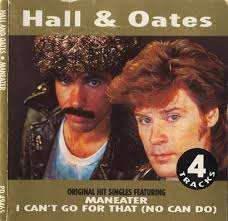Her was first described at Hearing Economics in a December post as real-life version of Samantha, the ear-level, all-knowing operating system that whispered into Joaquin Phoenix’s ear(s) in the film “Her.” As the hearing industry enters 2015, Her is manifest in a variety of ear-level wearables of varying sophistication and application, collectively dubbed Hearables. The January 4-9, 2015 CES (Consumer Electronics Show) has emerged as the go-to place for Hearables. GN Resound, which shifted to that venue several years ago, has got a lot of promotional mileage out of debuting its LiNX line of Apple and Android connected products there. Others in the Big 6 are following suit: Starkey was all atwitter at this year’s show and Siemens’ Smart Hearing Aid got tagged as one the “6 cool new wearable devices” at the show.
Most Hearables are not LiNX type hearing aids, not by a long shot. But Hearables in general promise a fast-approaching brave new world for “Her”-type hear care. December’s post gave a cursory review of the few Hearable things that appeared in 2014, most still in the early ear-mullet stage and largely treated as substitute goods by consumers.
No matter how mullety, the devices and apps mark big technological and/or innovative jumps over the things we used to put in our ears and on our heads back in the 1980s and other decades some of us would like to forget. Hearables may or may not be hearing aids, but they do a good job of enhancing Hall and Oates and that’s a start.
The Pew report (released 5/13/14) put the Her-Hearable-Wearables situation in human perspective:
“The future of wearables is in the awkward adolescent stage…. we’ll be here for awhile. … At some point, a product will come out that ‘just makes sense.’ … In the long term, something like this… probably will become a standard part of being human.” (ital added; Ian O’Byrne, assistant professor, University of New Haven)
Is Her Important?

Fig 2. Projected Hearables Market Growth (shown in $US) (courtesy of Nick Hunn)
Excepting BLE/MFI hearings aids, you might think other Hearables pose no threat to Audiology, hearing aid manufacturers, or consumers with hearing loss. Most are monaural, lack the physical refinements necessary for full time use, have limited abilities, and their nerdy looks are a turn off, even to geeks. But, you would probably be wrong.
Successive generations of Hearables are set to change the way people use their ears and the way manufacturers and hearing professional do their businesses. In true disruptive innovation fashion, fast uptake is predicted in the wearables market, especially for Hearables. Nick Hunn believes Hearables will overtake Smartwatches by 2018. Hunn’s Smart Wearables Report anticipates a $5B market by Hearables by 2018 (Fig 2). Right or wrong, that kind of money talk attracts players to the Supply side and almost guarantees technological advances.
On the Demand side, to the extent that forms and functions delight and deliver, existing markets will grow and new markets will emerge. When that happens, Hearables will no longer be substitute goods. They will be a disruptive innovation, effecting disruptive changes in the market (consumers) and technical service networks (TSNs) such as manufacturers, audiologists, dispensers, and industry trainers.
Consumers and retailers who question whether we’re ready for Her in the form of Hearables need only check with our consummate consumer advocate for hearing loss. Gael Hannan spells it out in the title of her recent post “Did You Hear What Your Hearing Aid Asked You?” She envisions her devices querying and directing her, even when they’re not in her ears. She envisions them as part of being human, part of being Gael.
If Gael’s ramping up for Her, then Her’s gonna happen!
Economic versus Audiologic Views
Audiology and Economic views differ on the importance and meaning of Hearables. It’s the same regulation-vs free-market set of arguments, with new players, that’s been discussed in past Econ 101 and 202 posts and will be discussed again in future posts. In the meantime, the following quotes give you the gist of it.
In the regulated industry and licensed turf corner, frequent HHTM commentator Steve Kreider observes:
Fantastic PR for SoundHawk (and other Hearables). Not so good for FDA-regulated hearing aids and the good people who fit them.
In the free market and technological innovation corner, Garnet Analysts 1 acknowledge Mr Kreider’s concerns but bows to the relentless Invisible Hand of Demand, saying one thing is clear:
Future supply chains must seamlessly integrate the digital and physical worlds of customers to be competitive.
In other words, Her is here to stay, whether we like Her or not. The bigger questions are how consumers will view and purchase them and what role Audiologists will assume in the process.
The 2015 roster promises more devices packaged in better forms allowing increased functionality. In some instances, the functionality anticipates a need before we know we need/want it. The next post in this series reviews wearable and Hearable innovations announced or due out in 2015 and considers whether evolving Hearables are medical or consumer electronic devices.
This is the post 2 in the Hearables series. Click here for post 1 or post 3.
References
1Gartner Analysts Supply Chain Top 25 for 2014
afro guy courtesy of good fon









If you have a Hearing Aid Practice as I do. You have to stop thinking your business is a commodity. Those who think they are a commodity are already out of business, they just haven’t run out of money yet. You can buy any commodity online for a cheap price that China produces for pennies.
If you want to flourish you have to figure out how your practice is not a commodity.